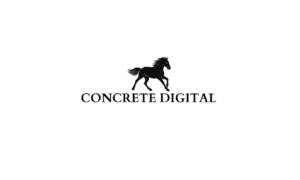In the fast-paced world of consumer technology, security is paramount. As we become increasingly reliant on smart devices, from smartphones to smart refrigerators, the need for robust security measures has never been greater. Traditional security methods have often proven insufficient in the face of evolving threats. This is where blockchain technology comes into play, offering innovative solutions to secure consumer technology in ways that were once unimaginable. In this article, we will explore the role of blockchain in securing consumer technology and how it is poised to revolutionize the industry.
Introduction
The Growing Concern of Consumer Technology Security
Consumer technology has infiltrated every aspect of our lives. From managing our finances and personal information to controlling our homes and cars, these devices have access to a wealth of sensitive data. Consequently, the security of these devices has become a significant concern. High-profile data breaches and cyberattacks have exposed vulnerabilities in existing security systems, leaving both consumers and manufacturers searching for more robust solutions.
Enter blockchain technology. Originally created to underpin cryptocurrencies like Bitcoin, blockchain is now being hailed as a game-changer in the world of cybersecurity. Its core principles of decentralization, immutability, and transparency offer unique advantages in securing consumer technology.
Blockchain and Decentralization
One of the fundamental aspects of blockchain technology is its decentralized nature. Unlike traditional centralized systems where data is stored in a single location or controlled by a single entity, blockchain operates on a distributed ledger that is accessible to all participants in the network. This decentralization eliminates a single point of failure, making it exceedingly difficult for malicious actors to compromise the system.
In the context of consumer technology, decentralization can be a game-changer. For instance, imagine a smart home system where each device, from your thermostat to your doorbell camera, communicates via a blockchain network. In such a scenario, even if one device is compromised, the rest of the network remains secure. This makes it significantly harder for cybercriminals to infiltrate and take control of your smart home.
Immutability and Data Integrity
Blockchain’s immutability is another critical feature for securing consumer technology. Once data is recorded on the blockchain, it cannot be altered or deleted without consensus from the network participants. This property ensures the integrity of data, making it nearly impossible for unauthorized changes to occur.
Consider the case of medical records stored on a blockchain. Patients’ health data is highly sensitive and must remain accurate. With a blockchain-based system, any changes to a patient’s medical history would require consensus from all parties involved, including the patient. This level of security and transparency is a substantial improvement over traditional centralized databases that are susceptible to tampering.
Transparency and Accountability
Transparency is yet another advantage of blockchain technology. Every transaction or action on a blockchain is recorded and visible to all network participants. This transparency fosters accountability, as any suspicious or malicious activity can be easily traced back to its source.
In the realm of consumer technology, this transparency can be applied to supply chain management. Manufacturers can use blockchain to track the production and distribution of their devices, ensuring that counterfeit or compromised products do not enter the market. Consumers can also verify the authenticity of their purchased devices by checking the blockchain for the product’s history.
Use Cases of Blockchain in Consumer Technology
Now that we understand the core principles of blockchain and how they can enhance security, let’s delve into some practical use cases of blockchain in consumer technology:
Securing Internet of Things (IoT) Devices: IoT devices are notorious for their vulnerabilities. Blockchain can provide a secure framework for IoT devices to communicate and authenticate each other, reducing the risk of unauthorized access.
Blockchain can create secure digital identities, protecting consumers from identity theft and ensuring that only authorized users can access their devices and data.
Consumers can make transactions with confidence using blockchain-based payment systems, knowing that the blockchain’s robust security measures protect their financial information.
Smart Contracts: Smart contracts, built on blockchain technology, can automate and secure various consumer transactions, such as rental agreements, warranties, and subscription services.
Data Privacy: Blockchain allows consumers to have more control over their personal data, granting or revoking access as needed. This empowers individuals to protect their privacy in an increasingly data-driven world.
Challenges and Considerations
While blockchain technology holds immense promise for securing consumer technology, it is not without its challenges and considerations:
Scalability: The scalability of blockchain networks remains an issue. As consumer technology adoption grows, blockchain networks must scale to accommodate increased transactions and data storage.
Regulatory Compliance: Blockchain technology often operates in a regulatory gray area. Manufacturers and developers must navigate complex legal frameworks to ensure compliance with data protection and privacy regulations.
User Experience: Integrating blockchain into consumer technology should not compromise user-friendliness. The technology must be seamless and intuitive for consumers to adopt.
Energy Consumption: Some blockchain networks, like Bitcoin, consume a significant amount of energy. The industry must work on developing more energy-efficient consensus algorithms.
Conclusion
We cannot understate the role of blockchain in securing consumer technology. Its decentralized nature, immutability, transparency, and various use cases make it a powerful tool for enhancing security in the digital age. As consumer technology continues to evolve, the integration of blockchain solutions will likely become the norm rather than the exception.



































